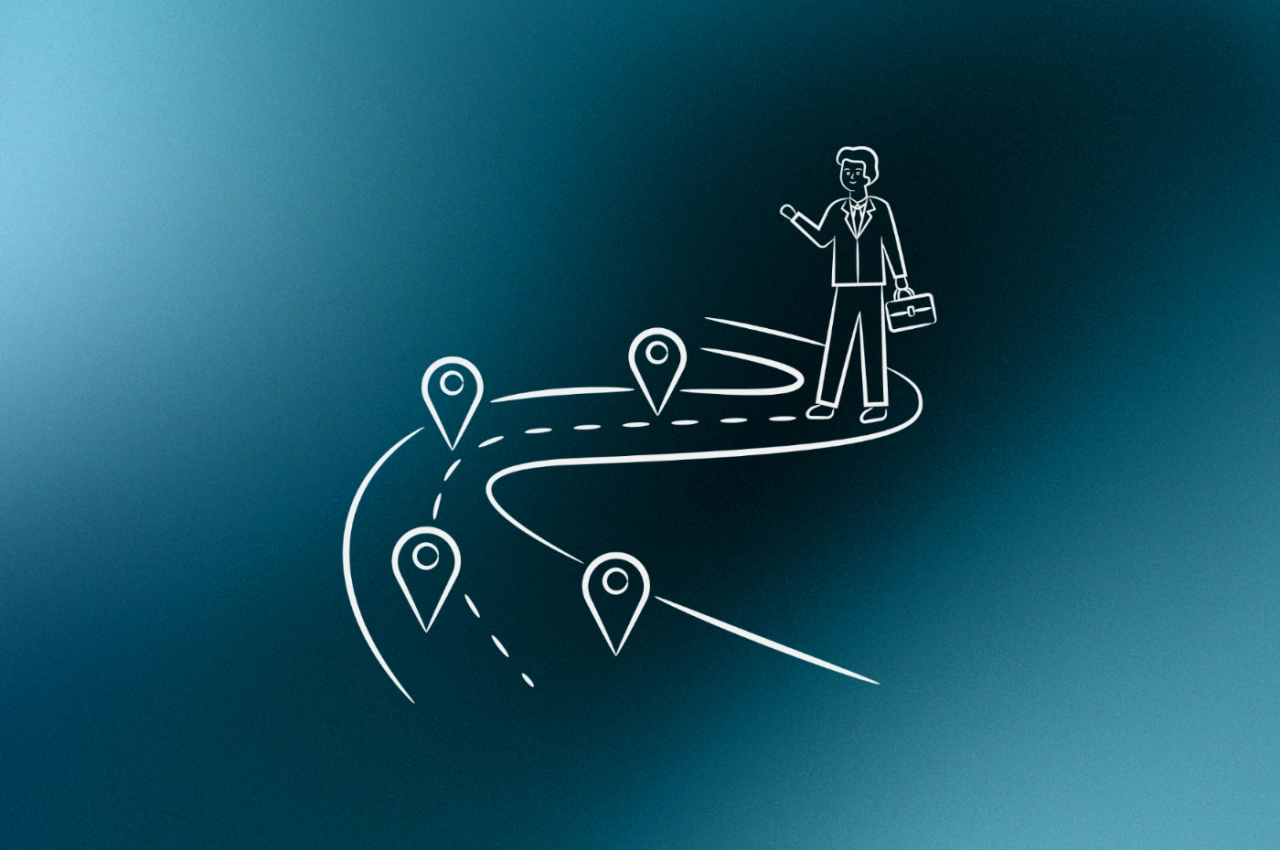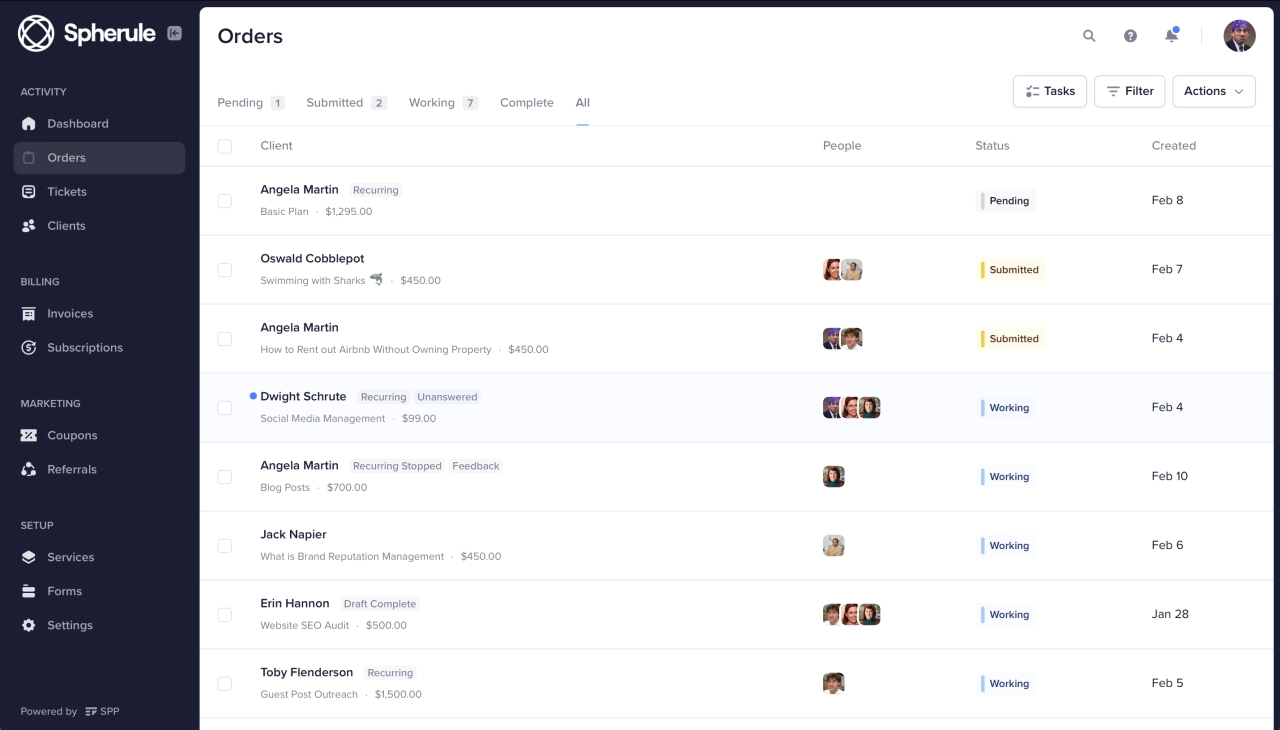- The B2B customer journey involves a structured process spanning from need identification to post-purchase advocacy, requiring companies to understand distinct stages—awareness, consideration, decision, retention, and advocacy—to create seamless customer experiences.
- The shift towards a predominantly digital journey with B2B buyers preferring to research and trial products without sales reps’ intervention indicates a need for companies to provide clear, accessible information and self-service options.
- By conducting a thorough customer journey analysis using heatmaps, analytics tools, and customer feedback, businesses can gain insights into customer behaviors and preferences, allowing them to improve the customer experience and drive growth.
Most typical purchases start like this: Identify a need or challenge, research solutions, and compare options before making a purchase. In a B2B setting, this process often takes weeks or even months, as it involves careful consideration and evaluation.
But unlike in the past when relying heavily on salespeople was the only way to navigate this journey, today’s B2B customers are taking a more proactive approach.
They conduct in-depth research, compare prices, read reviews, and start free product trials before making a final decision. In short, 75% of B2B buyers say they prefer a rep-free sales experience, according to Gartner’s B2B buying report.
This shift in the customer journey shows the need for B2B companies to simplify the buying experience for customers. Only then can you strengthen your sales strategy, differentiate your brand, and build lasting customer relationships.
This article explores the B2B customer journey, its stages, and how it differs from the B2C journey. I will also discuss customer journey analysis and mapping your customer journey to help you create a seamless buyer experience.
What is a B2B customer journey?
A B2B customer journey refers to the complete interactions and experiences a buyer has with your agency. It encompasses all customer touchpoints, from hearing about your brand to becoming loyal advocates.
Think of it like this: The buyer journey is like dating, while the customer journey is the entire relationship.
Buyer journey (pre-purchase):
awareness → consideration → decision
Example: A marketing director researches CRM systems, compares vendors, then purchases
Customer journey (entire lifecycle):
awareness → consideration → decision → retention → advocacy
Example: Same marketing director discovers the CRM, evaluates options, purchases, uses the system for 2 years, becomes a case study, refers other businesses
Key difference:
buyer Journey ends with purchase
customer journey continues through product use, support interactions, renewals, and referrals
Remember, every buyer starts as a customer, but not all become loyal advocates. Therefore, catering to both journeys creates seamless customer experiences that attract, convert, and retain buyers.
5 stages of the B2B customer journey
A typical B2B customer journey consists of five stages namely: awareness, consideration, decision, retention, and advocacy. Let’s discuss each of them briefly.
1. Awareness
This customer journey stage begins when buyers become aware of a challenge and start researching potential solutions. It’s at this point they discover your agency and its offerings through various channels such as online searches, industry events, social media, or referrals.
At this stage, providing relevant and helpful content is a great way to build brand awareness and pique the interest of potential buyers. The goal is to help them understand their challenge and proffer solutions.
Examples of content you can create in this stage include:
blog posts
videos
podcasts
ebooks
whitepapers
webinars
2. Consideration
Once aware of their problems, customers evaluate different solutions and compare prices. Product webinars, comparison guides, and case studies are examples of content that help position your agency as an expert and move leads toward making a buying decision.
3. Decision
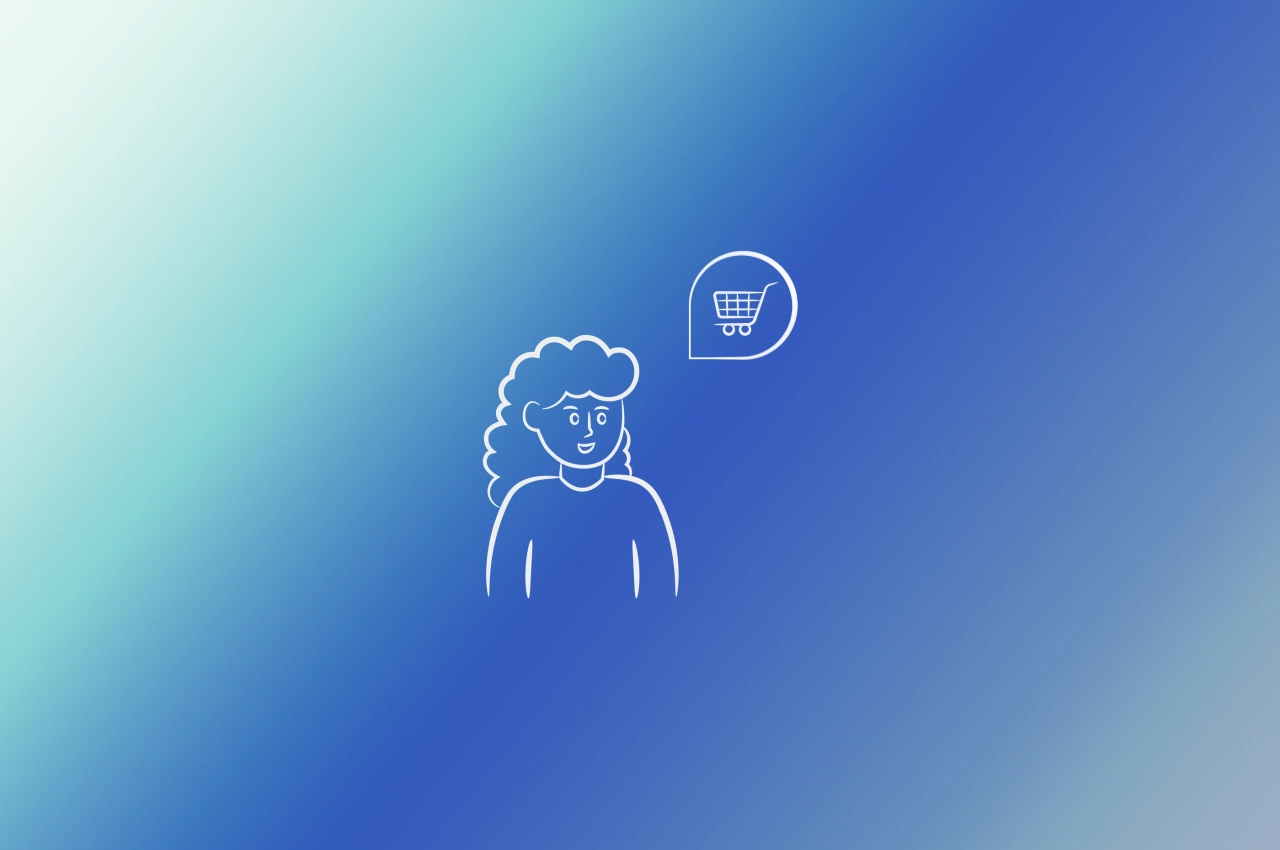
At this stage, customers have narrowed down their choices and are ready to make a final decision. But there’s still work to do. Since they are already product-aware, providing consultations, industry-specific case studies, testimonials, product demos, and free trials are effective ways to influence their buying decision.
4. Retention
Research shows that customer retention is more expensive than acquiring new ones. This makes it imperative to provide a seamless post-purchase experience for your clients. You can offer flexible payment options, provide reliable customer support, and a great onboarding experience to encourage repeat business.
5. Advocacy
Satisfied customers can become powerful brand advocates. They can provide positive reviews, recommend your business to others, and engage your business on social media or online communities.

SPP does a lot of the heavy lifting we used to do manually saving us a ton of time & effort. It's fantastic and I recommend it all the time. The way I explain it is that it's kind of like the Shopify for service businesses!Watch the case study →

Therefore, make it a priority to deliver exceptional products and services to your clients.
Interactive B2B customer journey map
Click on any stage to explore detailed information about customer touchpoints, metrics, and best practices
The difference between B2B and B2C customer journeys
While the end goal is similar, the customer journey in the B2B (business-to-business) and B2C (business-to-consumer) world differs significantly based on factors such as target audiences, sales cycle, and decision-makers. Let’s look at the differences between the B2B and B2C customer journeys.
Target market
The target market for B2B companies is usually smaller, industry-specific businesses with needs or challenges that your product or service can solve.
Conversely, B2C companies target a broader consumer market, focusing on individual consumers who may have more general needs or desires.
These differences in the target market impact the messaging and marketing strategies throughout the customer journey.
Decision makers and end users
In most B2B companies, evaluating and selecting the best product typically involves multiple decision makers. In the Gartner report, the average enterprise B2B buying group consists of five to 11 stakeholders.
Also, the decision-makers are usually not the end users. For example, a CMO may make the final decision on which agency marketing software to purchase, but the end users are the marketing team.
In contrast, B2C businesses usually have one primary decision-maker: the individual consumer who is also the end-user.
Sales cycle
77% of B2B buyers feel that their recent purchases were very complex or difficult. This is because of the multiple stakeholders involved, making the buying process longer. In short, research shows the average B2B sales cycle could take up to 24 months.
Whereas B2C customer journeys are usually shorter and more straightforward since the individual consumer is solely responsible for making the buying decision.
Buying motivation
B2B purchases are typically based on logic rather than emotions. Buyers consider factors such as cost, value, and impact on the business before making a decision.
In contrast, individual consumers base their buying decisions on their desires or emotions.
Marketing Channels
B2B marketing often relies on targeted content, industry-specific events, and building long-term B2B customer relationships. The aim is to establish credibility and reward loyalty.
B2C marketing frequently uses social media and mass media to reach a wider consumer audience. It places more emphasis on creating emotional connections and influencing individual buying decisions.
Conducting a customer journey analysis
B2B buyers don’t make impulsive decisions. Every interaction with your company either leads to the next step or pushes them further away.
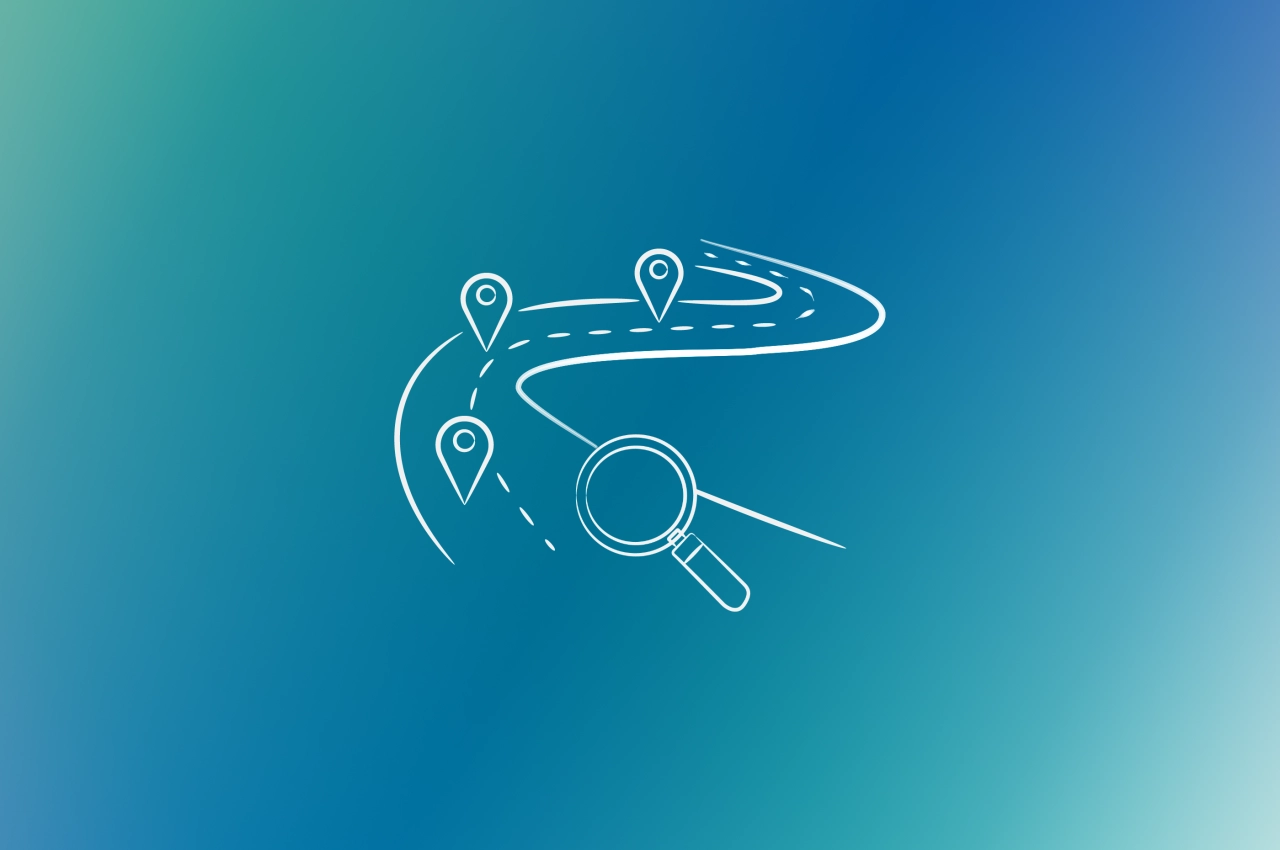
That’s why conducting a customer journey analysis is crucial. It allows you to analyze how they interact with your company at each stage of the customer journey. Think of it as stepping into the customers’ shoes to understand how your strategies impact their experience with your agency.
As such, carrying out a customer journey analysis allows you to gain valuable insights into consumer behavior, preferences, emotions, and pain points. The result? You’ll identify opportunities to improve customer experience, increase conversions, and drive growth.
Let’s look at proven ways to conduct an effective customer journey analysis for your agency.
Check heatmaps, Google Analytics, and other data points
Today’s digital world has paved the way for companies to use data-driven approaches to gain deeper insights into customer behavior and interaction patterns.
For example, heatmaps can show you the areas your website and client portal are getting the most attention or clicks. Heatmaps visualize user behavior using color coding: red/orange indicates high activity, blue/green shows low activity.
Types of heatmaps and what they reveal:
Click maps: Show where users click
Example: If pricing buttons show low clicks, consider making them more prominent
Scroll maps: Display how far users scroll
Example: If users stop scrolling before key information → restructure content hierarchy
Move maps: Track mouse movement
Example: Random movement patterns may indicate confusion → simplify navigation
Interpreting heatmap data:
hot spots on irrelevant elements = user confusion
cold spots on CTAs = poor visibility or unclear value proposition
scroll depth < 50% = content or layout issues need addressing
Also, Google Analytics can provide data on user demographics, successful lead gen channels, and popular pages. Gathering this data can help you understand how customers are engaging with your platforms and identify areas of improvement.
Customer reviews and user surveys
Analyzing client reviews is an effective way to get insights into the buying journey and uncover pain points or areas of opportunity. For instance, customers who complain about poor customer support or terrible website experience may indicate areas that need improvement.
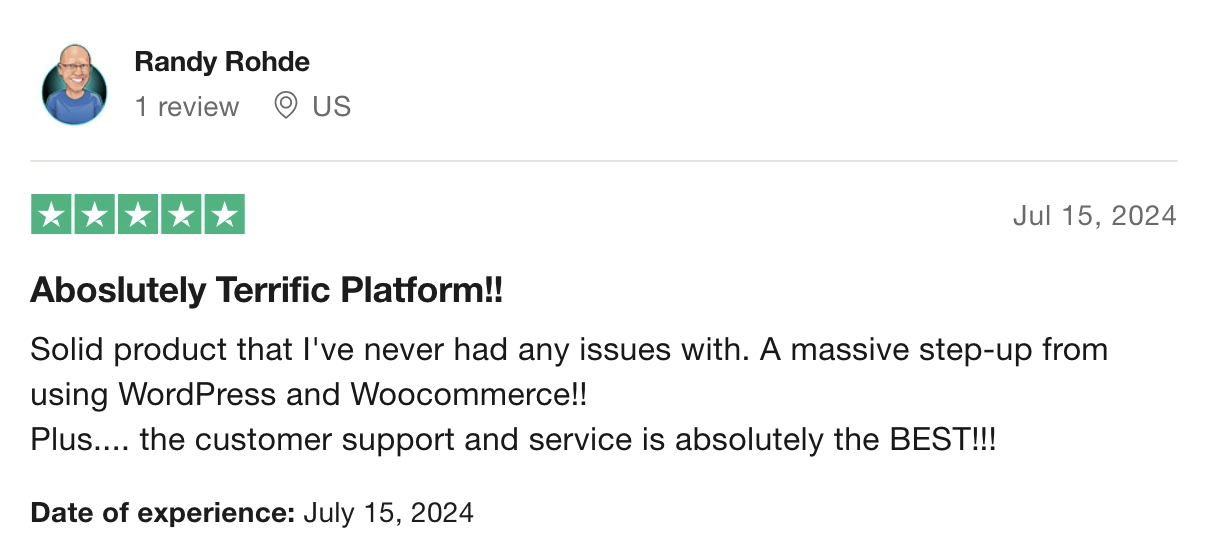
Also, conducting user surveys helps you gather feedback on specific touchpoints in the customer journey. This allows you to tailor your efforts based on direct customer input. Listen to your customers and address their concerns to enhance their overall buying experience and build stronger relationships.
Interviews with customers
Conducting in-depth client interviews helps understand their motivations, emotions, and challenges with your product or service. As a result, you can uncover valuable information about their thought processes, factors that influenced their buying decisions, and areas of improvement.
Looking at data in the client portal
If your agency is using B2B portal software, it most likely has an analytics feature that allows you to get an overview of your customer’s journey. Which services have they bought, and when? Who are your best customers, and what makes them so good?
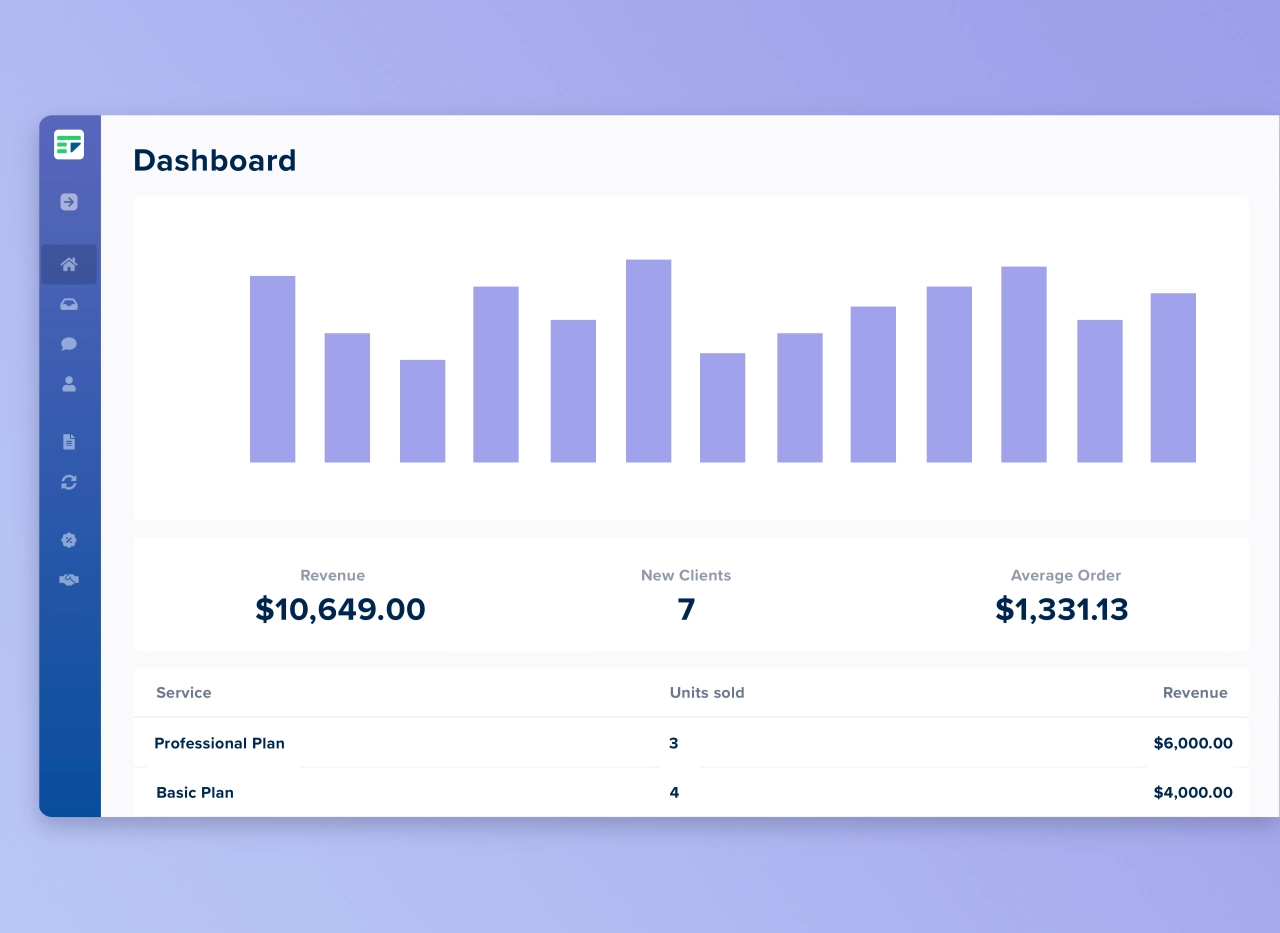
Get an overview of all your metrics with our powerful reporting.
Analyzing this data helps you improve the customer retention process flow. Take a deep dive into the data you already have, and add more information to it from external sources, such as your agency CRM software or social listening tools.
If you’re using Service Provider Pro, you can add your leads to the agency tool, and keep an eye on their journey. How do they interact with your portal? Do they visit specific pages, click on buttons, and attempt to buy a service?
Make use of heatmap tools and Google Analytics to get a better understanding of how they use the client portal. Then, make decisions on how to help them become a customer. Sometimes, they need a helping hand from your customer success team, other times they’re just confused about the pricing options.
Mapping & optimizing the customer journey
How do you ensure your customers enjoy a positive experience at each stage of their journey? That’s where creating a B2B customer journey map comes in.
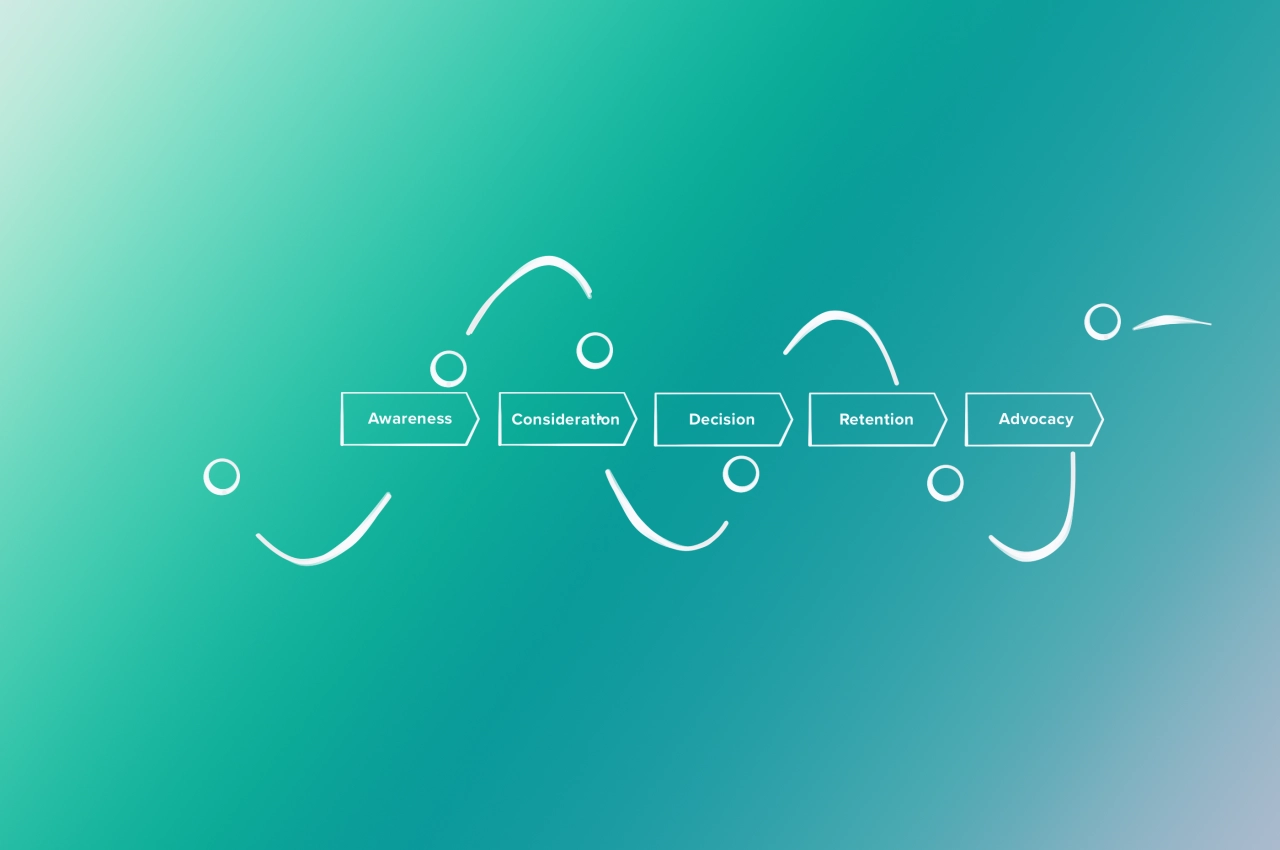
A customer journey map is a visual representation of a customer’s experience with your brand across all touchpoints. It’s an important tool to have as it helps you to better understand the path customers take when interacting with your business, identify pain points, and outline areas for improvement from initial awareness to post-purchase support.
Here are 5 steps to help you get started on your mapping process.
Develop buyer personas
A buyer persona is a fictional representation of your ideal B2B customer based on market research and existing customer data. It includes demographic information such as age, gender, income, location, and occupation, as well as psychographic details like interests, values, goals, and challenges.
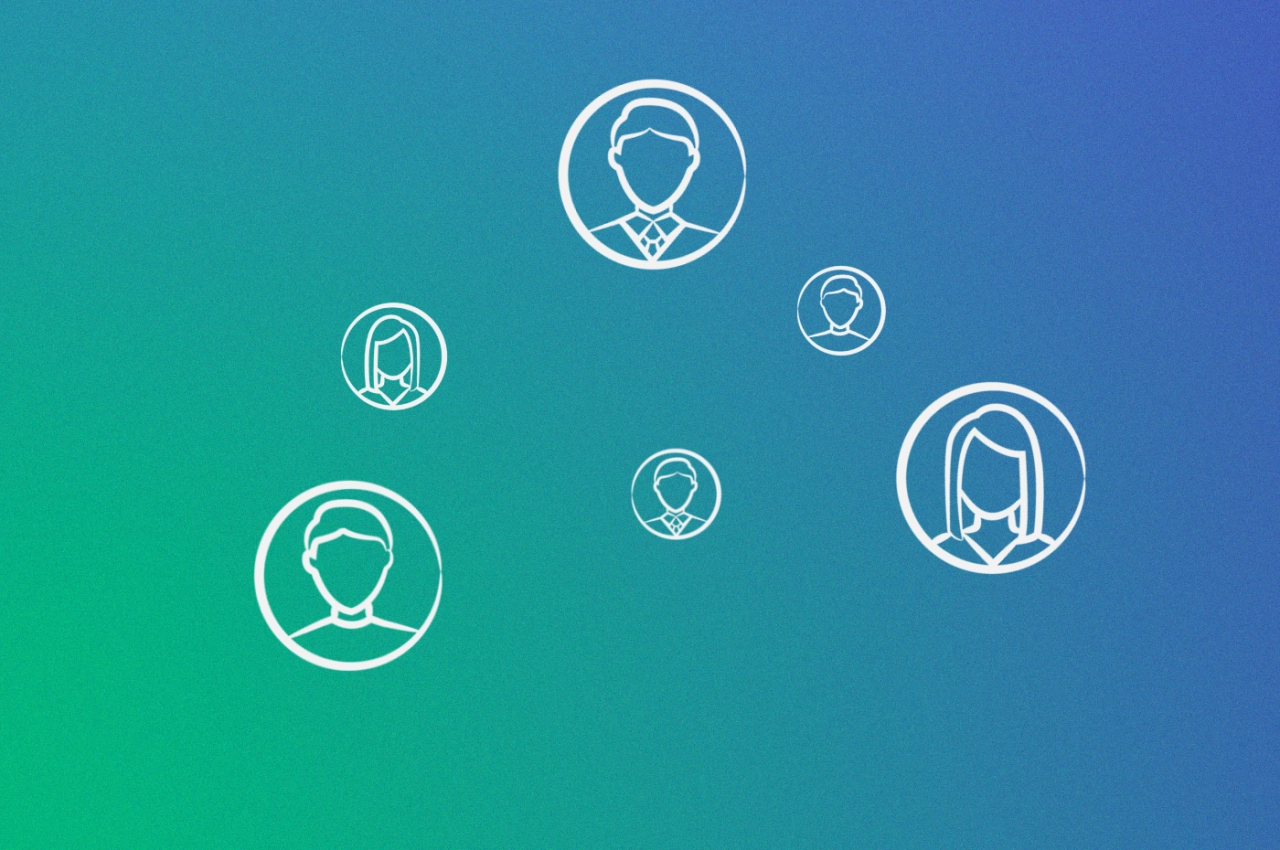
Developing buyer personas helps you tailor your marketing efforts to your customer’s specific needs. Statista reports that 36% of global B2B companies combine buyer personas and customer journey maps to help them understand how their customers move through the buying funnel. Through customer surveys, interviews, and reviews, you can gather data to create accurate buyer personas for your business. Moreover, in the realm of B2B, where meticulous record-keeping is paramount, the concept of data archiving emerges as a crucial component.
As I mentioned earlier, B2B buyers are usually not the end-users. So it makes sense to develop buyer personas for both decision-makers and users. It can also make sense to have a company-orientated buyer persona, for instance, targeting SEO agencies.
Touchpoints
The next step is to identify all the encounters that a customer has with your company. At what point do your customers contact, interact, or engage with your agency? These touchpoints can fall into any stage of the buying journey.
Here are a few B2B customer journey stages:
Touchpoints in the awareness stage may include browsing your website or engaging with social media ads.
In the consideration stage, it may involve reading case studies or receiving email newsletters
The decision stage touchpoints may involve checking out pricing pages, subscribing to free trial offers, or speaking with a sales team.
Identifying and mapping out these touchpoints helps you understand the customer journey and how to improve it.
Activation points for different personas
This refers to the specific actions or triggers that motivate B2B buyers to take the next step in their customer journey. These activation points can vary based on the unique characteristics and preferences of each persona.
They can include special discounts, personalized recommendations, or exclusive access to content. Understanding each buyer persona activation point helps you come up with targeted email campaigns and other marketing strategies that engage and convert customers at each stage of their journey.
To help you understand the different between touchpoints and activation points better, here’s an overview.
Touchpoints: Any interaction between customer and brand
Examples: Website visit, email newsletter, customer service call
Purpose: Build awareness and engagement
Measurement: Traffic, open rates, response times
Activation points: Specific triggers that prompt action
Examples: Free trial expiration, special offer deadline, product demo invitation
Purpose: Drive conversion or advancement in journey
Measurement: Conversion rates, progression metrics
Mapping the difference:
Touchpoint: Customer reads your blog post → Activation point: Pop-up offers downloadable ROI calculator
Touchpoint: Customer attends webinar → activation point: Personalized demo invitation based on webinar questions
Touchpoint: Customer service interaction → activation point: Upgrade offer based on usage patterns
Measurement & analysis of customer journey progress
The customer journey is dynamic and requires ongoing analysis to adapt to changing customer behaviors and enhance the overall buying experience.
To understand and improve your customer journey, it’s essential to track specific metrics that align with your business goals at each stage of the journey, from awareness to advocacy. By doing so, you gain valuable insights into how buyers navigate different stages of their interaction with your company.
Tools like Google Analytics, customer relationship management (CRM) systems, and customer feedback tools help in tracking and measuring customer interactions across various touchpoints. They provide valuable data on metrics, such as website visits, email engagement, and social media interactions.
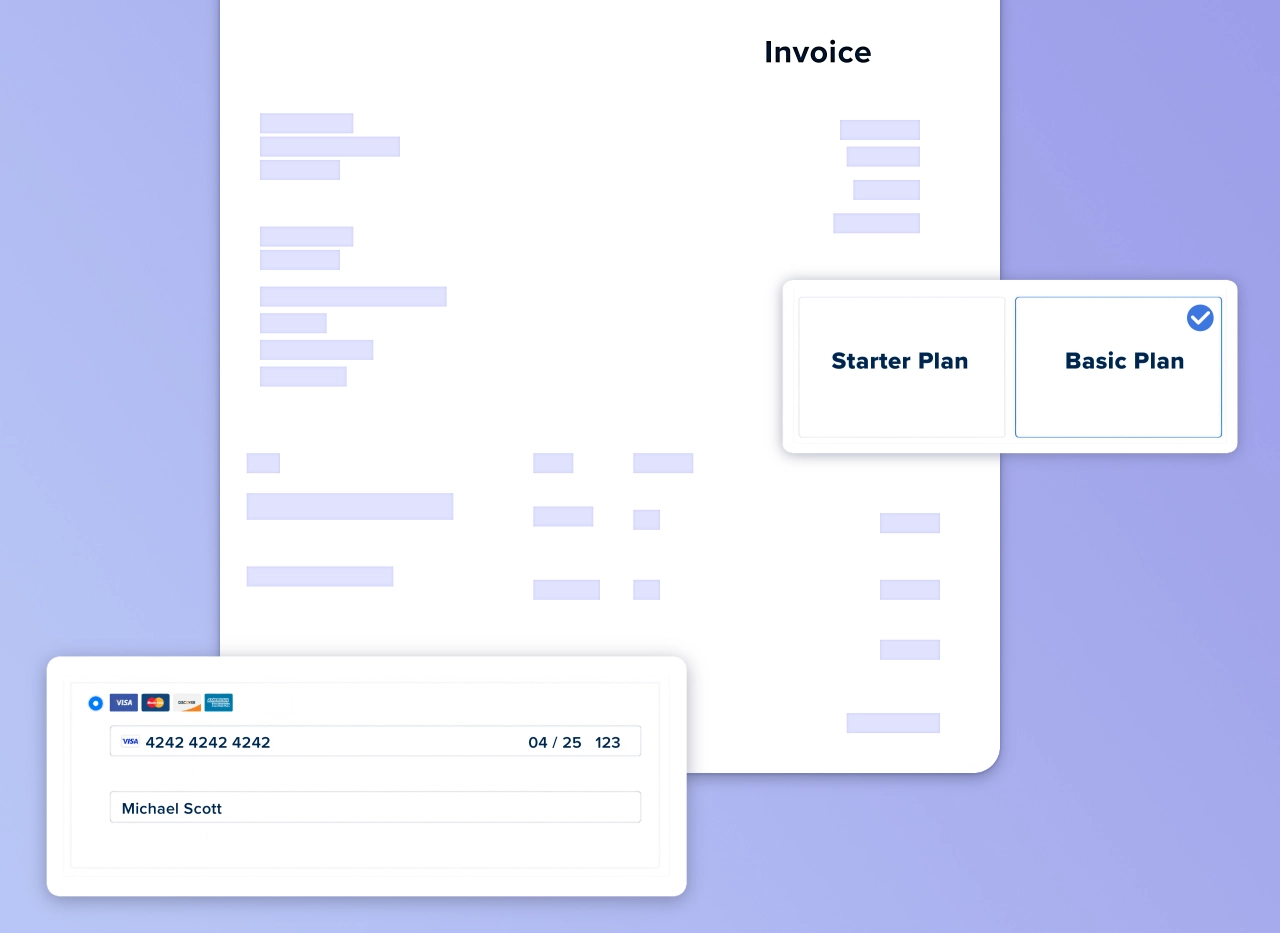
Invoice and collect payments automatically and on time.
By collecting and analyzing this data, you can identify points where potential customers are dropping off and areas of improvement. This allows you to make informed decisions to optimize the customer journey and drive better conversion rates.
Collecting customer experience feedback
How do you understand a customer’s experience with your brand at different touchpoints? That’s where collecting customer feedback comes in. You can gather this feedback through surveys, reviews, interviews, and social media monitoring. In addition to this, leveraging email verification tools can ensure that your feedback collection process is thorough and accurate.
The goal is to identify areas where leads face challenges. For instance, you can pinpoint when they cannot sign up for a free trial, upgrade their account, or access certain product features.
By detecting these issues, you can address customer concerns and further optimize the customer journey.
Frequently asked questions
What is an example of a B2B experience
A content marketing agency seeking new white label SEO software researches their options online, explores different options, compares pricing, reads case studies, requests a demo, or starts a free trial before making a buying decision.
What are the key components of a customer journey map?
Some key customer journey map components include buyer personas, touchpoints, timelines, customer emotions, pain points, actions, and opportunities.
What is the average B2B buying cycle?
The average B2B buying cycle is between six and 18 months. However, this may vary based on industry, target market, product, & decision-making process.
Optimize the B2B buying journey
The B2B customer journey is a complex and dynamic process. This much is clear. But if you focus on delivering exceptional buying experiences, you’ll excel at effectively guiding customers through different stages of their journey with your agency.
